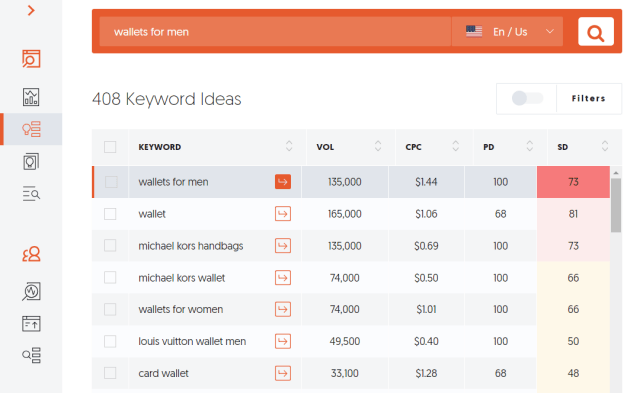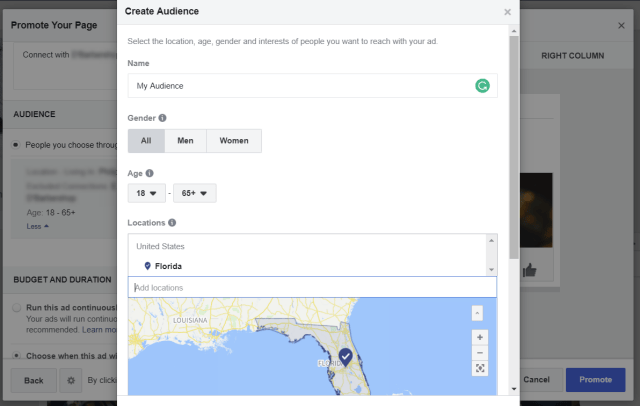Good news for aspiring entrepreneurs: Now is the best time to start an online business.
Everything you need to build and run a budding online brand is within reach. You just need to know where to look and have a ton of patience because — it’ll probably take a while before you close your first sale.
Luckily for you, we have compiled all the essential steps that can help you build an online business from the ground up.
Let’s begin.
1. Decide on a Product
First things first, you need to decide what product or service to offer.
The usual route is to choose a niche that’s already within your sphere of interest.
It’s not rocket science. If you are passionate about the product you’re selling, it’s easier to stay motivated in the long run — even if you’re not yet seeing the results you want.
Unfortunately, selecting a profitable product is nowhere near that simple. Other than the product itself, you also have to pay attention to your market, competitors, and barriers to entry.
Although product research warrants a full-length guide of its own, one of the steps you can try right now is keyword research.
Put simply, conducting extensive keyword research will allow you to understand what users are searching for online.
Most keyword research tools also collect useful metrics, such as the monthly search volume, average CPC bid, and keyword difficulty. All of which will allow you to gauge the demand for a certain product as well as identify niche segments that aren’t too competitive.
Ubersuggest, for example, quickly expands your seed keyword idea into hundreds of long-tail variations. The results also include all the crucial metrics that will help you spot viable keyword opportunities.

2. Piggyback Existing Platforms
Once you come up with a product you’d like to sell, it’s time to give it whirl.
It’s too early yet to build your own online store since you’re still unsure if your product will really take off. To test how well you can sell them, you can piggyback e-commerce marketplaces like eBay and classified advertisements websites like Craigslist.
These platforms are rather straightforward: you set up an account and post your item for other users to see.
If you’re lucky, you can close a deal within a few days. But realistically, it may take a while before you can find a product in your desired niche that would unequivocally do well.
For those who plan to sell a physical product, choosing the right supplier is a key decision that you can’t afford to rush.
This is a lot easier if you are already in touch with domestic suppliers whom you can meet in person. Otherwise, you need to sweep through directories such as ThomasNet, Alibaba, and Kompass.
3. Build Your Own Website
Regardless if you plan to get into e-commerce, affiliate marketing, or freelancing, leveraging existing platforms simply wouldn’t cut it.
You need your own, official website if you want your brand to be recognized as a relevant player in your industry.
This process starts with buying a domain name, which should be punchy, easy to remember, and brandable. Keywords can also be included in your domain name for a marginal SEO benefit, but it should never be forced.
After registering a domain name and paying for hosting, the next step is to select a website platform.
Content management systems like WordPress have been gaining ground due to their flexibility, ease of use, and scalability. It features truckloads of self-service tools and plugins you can use to piece a functional website together without writing a single line of code.

If you intend to create a website that’s purely for e-commerce, then a platform like Shopify would definitely streamline the entire development process.
All of the features you need to run an online store, from creating product pages to setting up payment gateways, will be accessible right out of the box. There are also several apps you can use for expandability, be it for customer retention, email marketing, and so on.
4. Create a Blog
A blog section on your website serves as a springboard that will help you grow your traffic and develop your brand.
Greeting visitors with nothing but sales pages or product descriptions won’t be enough to win their trust. Informative articles in the form tutorials, “how to” guides, and product reviews, however, can effectively build buyer confidence and drive up conversions.
Don’t worry — most, if not all, content management systems, website builders, and e-commerce platforms have built-in blogging tools you can use to seamlessly incorporate blog posts and other types of content.
The real challenge is promoting your posts and increasing traffic to your blog.
Here are some must-have strategies:
- Create evergreen content for sustainable traffic growth
- Spy on your competitors for content ideas
- Use content research tools like Google Alerts and BuzzSumo
- Promote your content on Q&A websites like Quora
5. Expand Your Social Reach
Speaking of blog promotion strategies, a surefire way to immediately get your target audience’s attention is to share your content on social media.
It may sound simple, but you actually need to get a handle on a lot of complexities in order to fully utilize social media networks.
You don’t just set up an account and start spamming your content whenever they go live.
Post scheduling, for example, requires you to be aware of the social media behaviors of your audience — specifically the times when they’re most active. You also need to actively participate in the community to be noticed by other users.
One example is to join social media groups that are relevant in your niche. From there, establish your position as an information provider by answering questions and sharing useful resources.
Finally, don’t forget to explore advertising opportunities on social media.
Platforms like Facebook, for example, has a robust audience targeting system that lets you define your audience based on details such as their age, location, and interests. This will allow you to present your content only to users who will surely appreciate them.

Conclusion
That’s it — the stress-free way to start a business online.
Seems easy and manageable, right?
The truth is, at this point, you only have the bare bones of what could be a successful online endeavor. You’re only at the beginning of a journey that could take months or even years before it can yield results.
The question is, do you have the persistence, drive, and grit to eventually make it big?
If you have any questions, suggestions, or tips you’d like to share other aspiring online entrepreneurs, feel free to use the comments section below. Good luck!